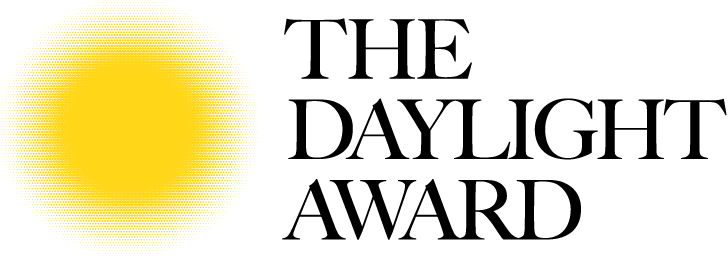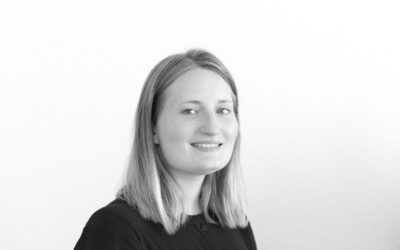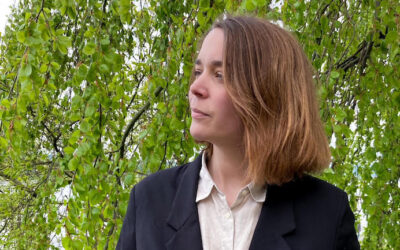The Daylight Award Community
Mathias Sønderskov Schaltz

FEATURE

What does daylight mean to you?
Living in Scandinavia, daylight for me is the sensation of wakening up after a dark winter hibernation. We see people clearing their calendars as soon as the first spring sun is out. So it means mood, energy and motivation for me to get my daily “daylight shower”.
How did your interest in the subject rise?
It was in the intersection of several interests that I found my interest. Facades, building performance, parametric design and coding were all intertwined with daylight design. When I started my studies I was very unsure whether to pursue a career in architecture or in software development. Working computationally with daylight simulation and designs allowed me to stay in contact with both worlds.
There’s also a community side to daylight simulations. Until recently it has been very niched where everyone had to develop their own methods and sharing them in smaller communities. Such communities could be the radiance mail list and workshops. A few years back the whole ladybug/honeybee development took pace and with almost half a million downloads then there’s a lot more like me out there. I really enjoy the community part of sharing and mentoring even though 90% of the contact is online since we’re scattered all over the world. Living in Copenhagen I feel that it’s easy to meet with peers physically. There’s a lot of interest of my workflows on my LinkedIn and I spend a lot of time interacting with people who has questions or are stuck in their own development.
How do you work with daylight in your research?
Although in most cases a profile like me gets involved to show compliance with local code regulations. However most projects end up being much more than that. Arguing and pushing the code requirements where it makes sense, requires technical competences and experimentation.
I usually sit with the architect teams, working with facades and bridging to the engineering teams, translating architectural intent. This has lead to the beautiful facades of the new Uppsala Townhouse where an aluminum clad timber façade has well integrated markisolets for sunshading.
At the moment I’m on paternity leave from LINK Arkitektur several months but when that’s over I will continue to work with facades and daylight on the new Rikshospitalet in Oslo which is several hundred thousand squaremeter hospital. A project like this requires computational workflows when you are assessing more than thousand rooms. But in the façade group we focus a lot on human scale such as how high is the window sill, so that a patient has a great view to the outdoors and how can we create privacy in a patient room.
Which project/publication describes your work the best?
On the project side I’m really happy with the facades of the new Uppsala Townhouse. It is a culmination of a lot of requirements in one façade with ventilation gaps, integrated electricity, replaceable cladding, markisolets, acoustic panels. It was a tough process but the end result is really satisfying.
On the development side I automated the way we calculate the Danish 10% rule for daylight (in case people are not doing real simulations). This has helped on many projects in early phase where density has been challenging. It characterizes me a lot that I see the potential, I see the everyday struggle, and then I start coding it. If I get stuck on the way then I always find alternative technical solutions. This saved a lot of struggle with the MEP engineers on projects like Carlsberg in Copenhagen.
According to you, what is the most important focus for the future?
In a profession that gets increasingly more technical I think it’s important that we, probably with software, still make it fun and intuitive to experiment with designs as it drives both creativity and motivation. Daylighting is definitely a very technical field in terms of implementation and all of its derivatives such as the non visual aspects affecting our brain, heating and glare to mention a few. Is there an easier way we can control, or at least assess all of these while designing daylight like we did 50 years ago with mainly the visual atmosphere in mind?
Since graduation, I was working 6 years at Henning Larsen under Anne Iversen and Jakob Strømann. Both have been incredible mentors in each their ways. Anne providing me with all the radiance references she picked up during her PhD and Jakob who always saw how this and that technical competence could lead into innovative projects. Books like Reinhardt’s The Daylighting Handbook was also an eyeopener during my studies and I still preach the rule of thumbs in it to my colleagues.
Daylight Simulation Script Run-through
https://io.linkarkitektur.com/en/news/daylight-simulation-script-runthrough
Parametric Daylight Studies on rikshospitalet
https://www.linkedin.com/posts/mathias-s%C3%B8nderskov-schaltz-374b0232_daylighting-daylight-ladybugtools-activity-6871708024499687424-awxY
An attempt to gamify how we design
https://www.linkedin.com/posts/mathias-s%C3%B8nderskov-schaltz-374b0232_minecraft-monoceros-townscaper-activity-6865299600366985216-Mv1F
10% calculator automated
https://www.linkedin.com/posts/mathias-s%C3%B8nderskov-schaltz-374b0232_architecture-facade-grasshopper-activity-6764868727944077312-1mrK



